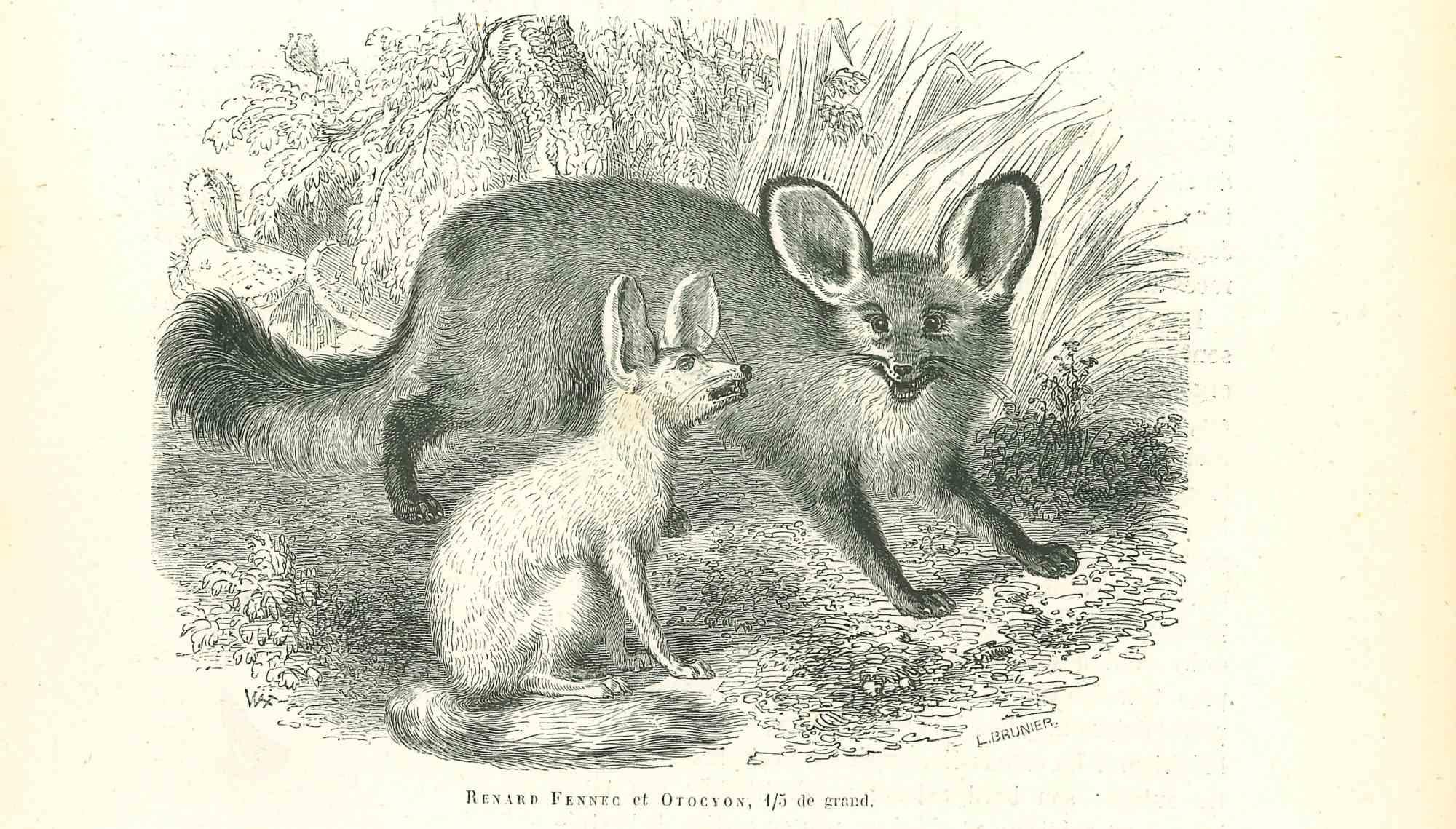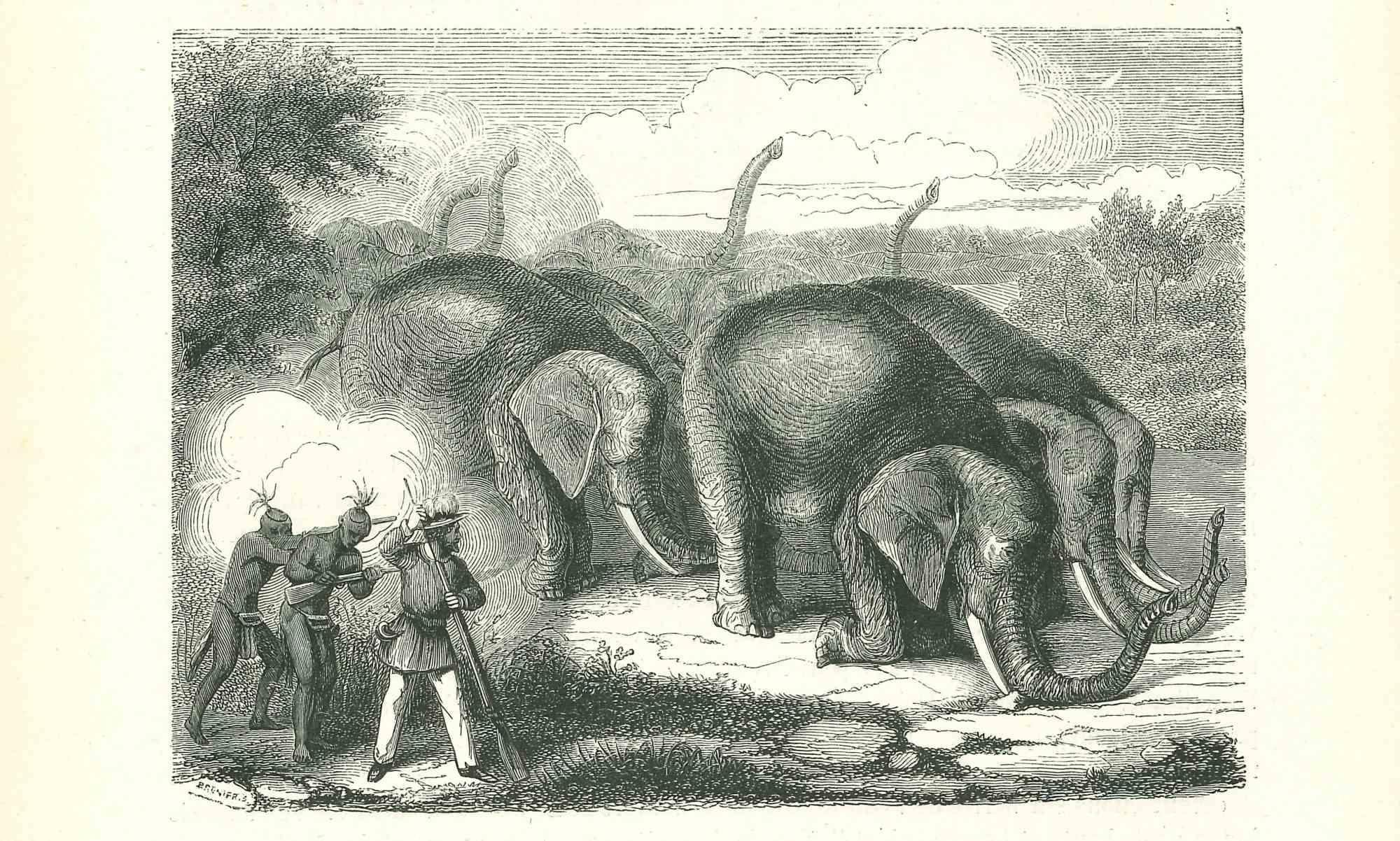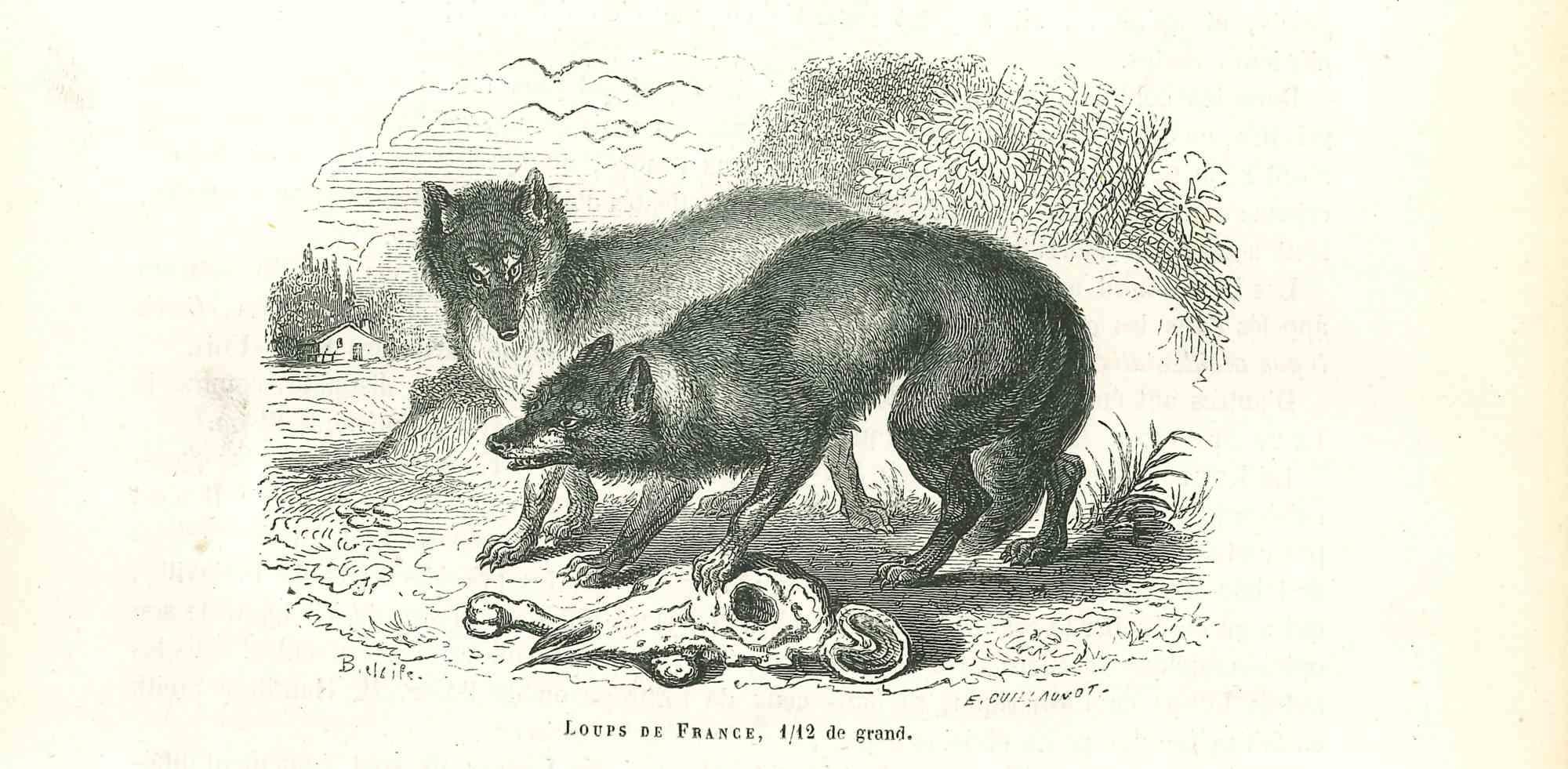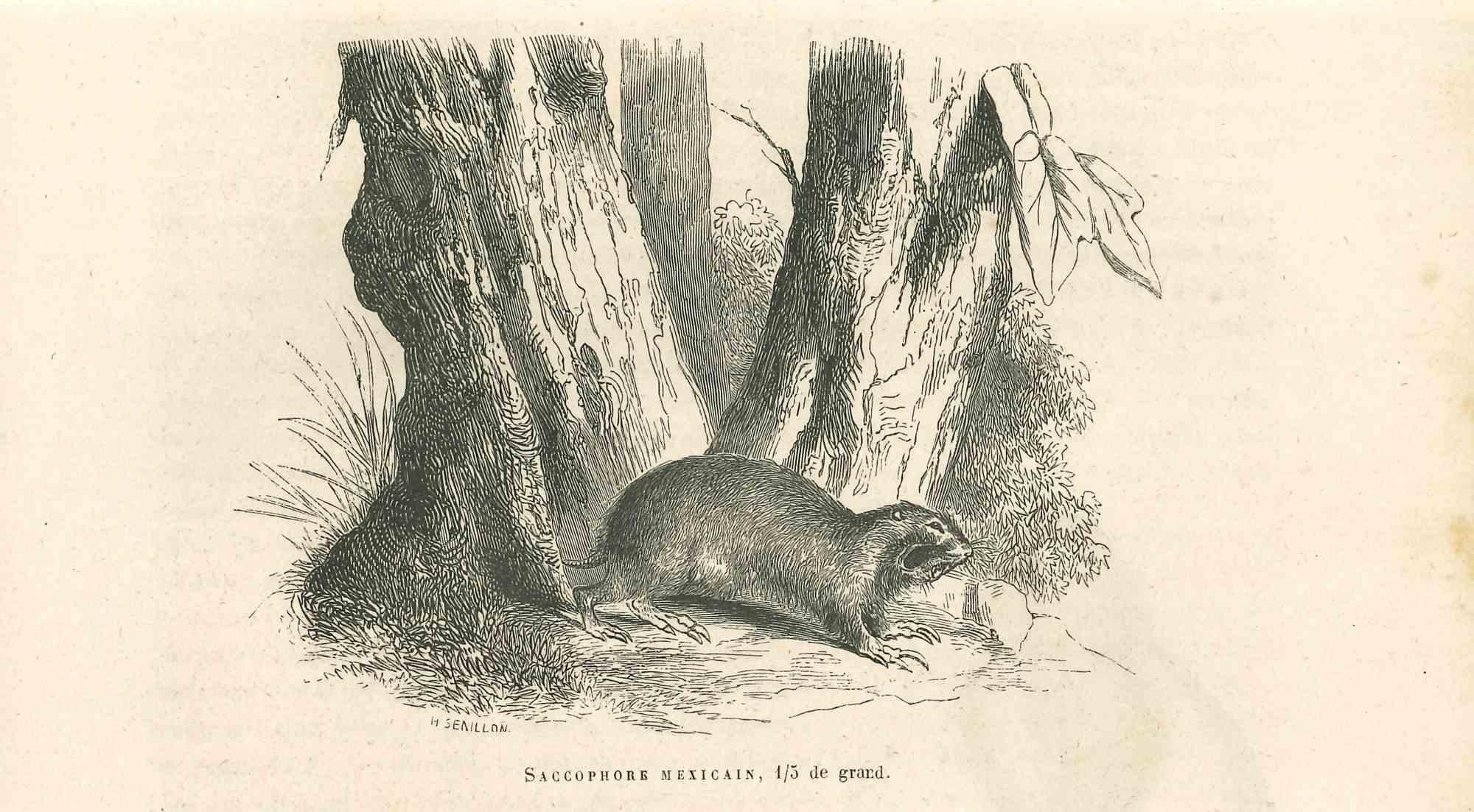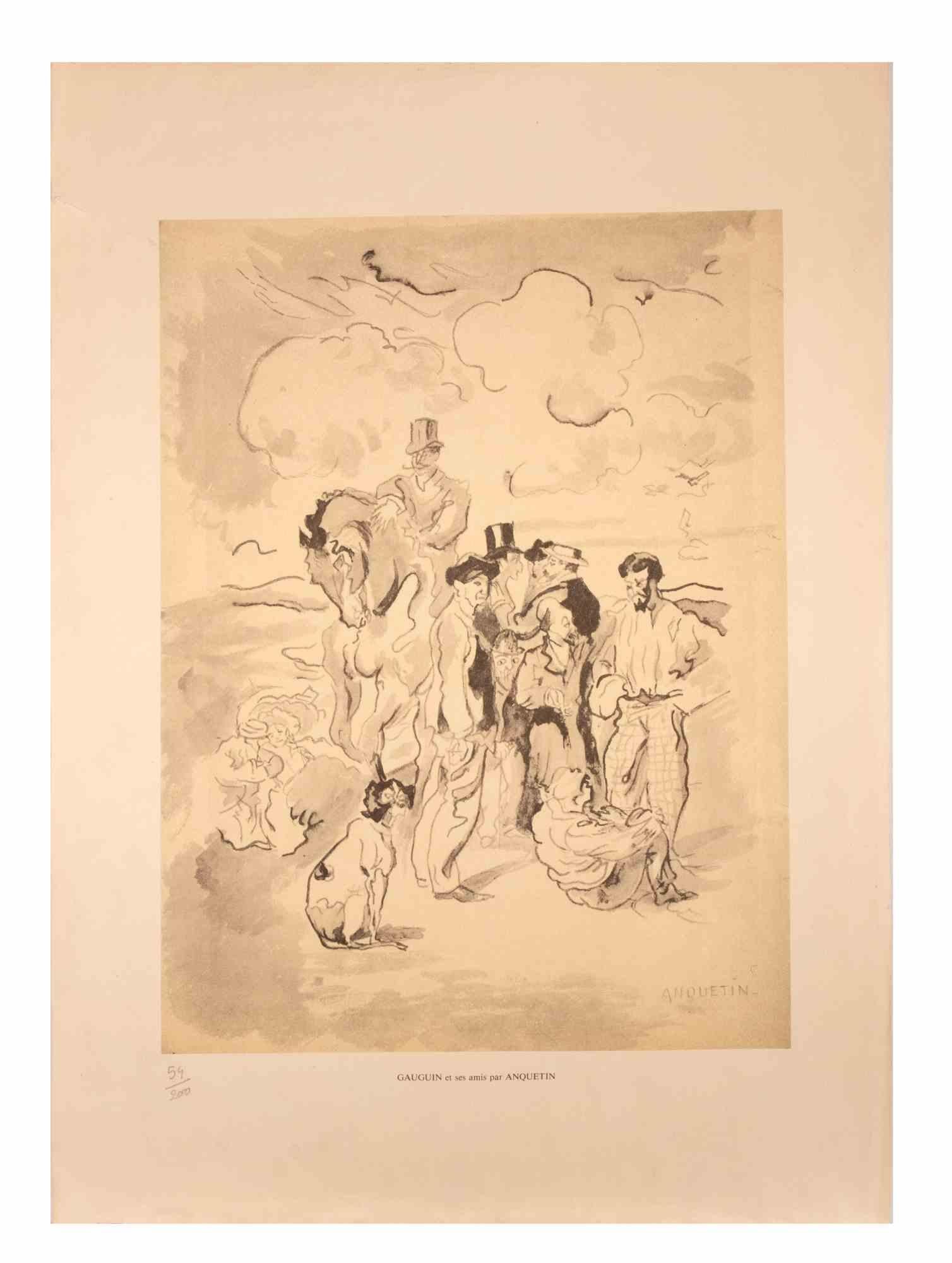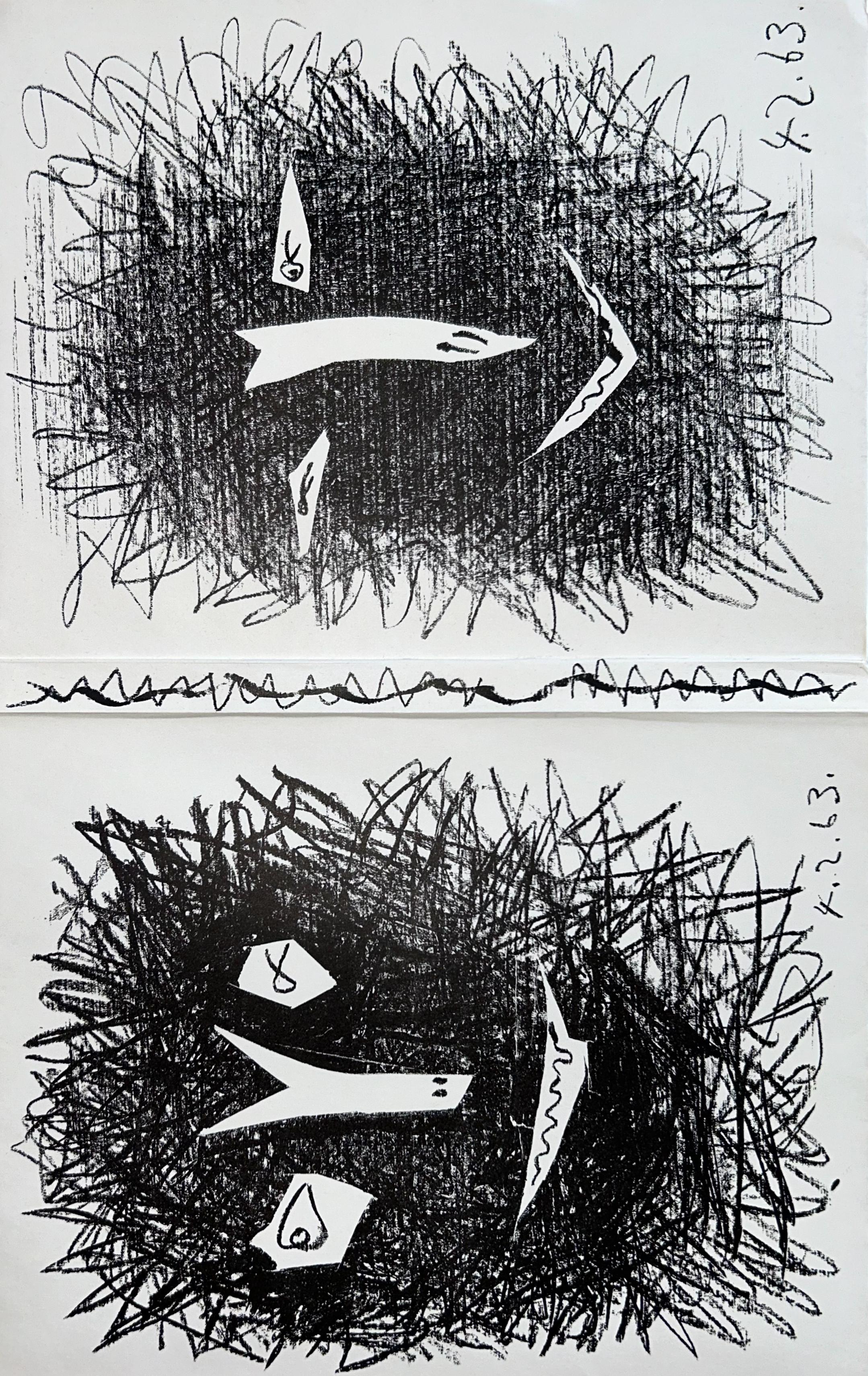Items Similar to Ex Libris Rudolfa Haly - Original Lithograph on Paper - Mid-20th Century
Want more images or videos?
Request additional images or videos from the seller
1 of 2
UnknownEx Libris Rudolfa Haly - Original Lithograph on Paper - Mid-20th CenturyMid-20th Century
Mid-20th Century
About the Item
Ex Libris Rudolfa Haly is an original Contemporary Artwork realized in the mid-20th Century.
Original B/W woodcut print on ivory-colored paper.
The work is glued on cardboard.
Total dimensions: 21 x 15 cm.
Mint conditions.
The artwork represents a minimalist, clean design, a figure behind a shape with a wings on the lower, dreamy-like world, through preciseness and congruous colors.
- Creation Year:Mid-20th Century
- Dimensions:Height: 2.17 in (5.5 cm)Width: 2.17 in (5.5 cm)Depth: 0.04 in (1 mm)
- Medium:
- Movement & Style:
- Period:
- Framing:Framing Options Available
- Condition:Insurance may be requested by customers as additional service, contact us for more information.
- Gallery Location:Roma, IT
- Reference Number:
About the Seller
4.9
Platinum Seller
These expertly vetted sellers are 1stDibs' most experienced sellers and are rated highest by our customers.
1stDibs seller since 2017
6,757 sales on 1stDibs
Typical response time: 2 hours
- ShippingRetrieving quote...Ships From: Grasse, France
- Return PolicyA return for this item may be initiated within 14 days of delivery.
More From This SellerView All
- Renard Fennec - Lithograph by Paul Gervais - 1854By Paul GervaisLocated in Roma, ITRenard Fennec is a lithograph on ivory-colored paper, realized by Paul Gervais (1816-1879). The artwork is from The Series of "Les Trois Règnes de la Nature", and was published in 18...Category
1850s Modern Figurative Prints
MaterialsLithograph
- The Elephant Hunting - Original Lithograph by Paul Gervais - 1854By Paul GervaisLocated in Roma, ITThe Elephant Hunting is an original lithograph on ivory-colored paper, realized by Paul Gervais (1816-1879). The artwork is from The Series of "Les Tr...Category
1850s Modern Figurative Prints
MaterialsLithograph
- The Wolves - Lithograph by Paul Gervais - 1854By Paul GervaisLocated in Roma, ITThe Wolves is a lithograph on ivory-colored paper, realized by Paul Gervais (1816-1879). The artwork is from The Series of "Les Trois Règnes de la Nature", and was published in 1854....Category
1850s Modern Figurative Prints
MaterialsLithograph
- Saccophore Mexicain - Original Lithograph by Paul Gervais - 1854By Paul GervaisLocated in Roma, ITSaccophore Mexicain is an original lithograph on ivory-colored paper, realized by Paul Gervais (1816-1879). The artwork is from The Series of "Les Trois Règnes de la Nature", and was...Category
1850s Modern Figurative Prints
MaterialsLithograph
- Gauguin et Ses Amis - Lithograph by Louis Anquetin - Early 20th CenturyBy Louis AnquetinLocated in Roma, ITGauguin et Ses Amis is a Lithograph realized by Louis Anquetin (1861-1932). Good condition on a yellowed paper. Signed , titled ancd numbered on the lower margin. Louis Émile Anqu...Category
Early 20th Century Modern Figurative Prints
MaterialsLithograph
- Nude From Back - Lithograph by Marcel Vertès - Mid-20th CenturyBy Marcel VertèsLocated in Roma, ITNude From Back is lithograph on Japanese paper realized by Marcel Vertès in the mid-20th Century. Hand-signed on the lower. Included a Passepartout: 58 x 38 cm The artwork is in go...Category
Mid-20th Century Modern Nude Prints
MaterialsLithograph
You May Also Like
- Couverture Mourlot IVBy Pablo PicassoLocated in Wien, 9- dated in the plate: 4.2.63 - original lithograph as book cover of the monograph "Picasso. Lithograph" - consists of spine, front and back cover - edition 3000 - cat. raisonné Mourl...Category
1960s Modern Figurative Prints
MaterialsLithograph
- After Pablo Picasso - Wildlife of Antibes - LithographLocated in Collonge Bellerive, Geneve, CHAfter Pablo PICASSO (1881-1973) One plate from the book: Jaime Sabartés. "Faunes et flore d'Antibes" (Greenwich, Conn: New York Graphic Society, 1960). Color Lithograph 63 x 47 cm ...Category
1950s Modern Figurative Prints
MaterialsLithograph
- Marc Chagall - The Bible - Eve - Original LithographBy Marc ChagallLocated in Collonge Bellerive, Geneve, CHMarc Chagall, Original Lithograph depicting an instant of the Bible. Technique: Original lithograph in colours (Mourlot no. 234) On the reverse: another black and white original lith...Category
1960s Modern Figurative Prints
MaterialsLithograph
- Marc Chagall - Moses - Original LithographBy Marc ChagallLocated in Collonge Bellerive, Geneve, CHMarc Chagall, Original Lithograph depicting an instant of the Bible. Technique: Original lithograph in colours Year: 1956 Sizes: 35,5 x 26 cm / 14" x 10.2" (sheet) Published by: Éditions de la Revue Verve, Tériade, Paris Printed by: Atelier Mourlot, Paris Documentation / References: Mourlot, F., Chagall Lithograph [II] 1957-1962, A. Sauret, Monte Carlo 1963, nos. 234 and 257 Marc Chagall (born in 1887) Marc Chagall was born in Belarus in 1887 and developed an early interest in art. After studying painting, in 1907 he left Russia for Paris, where he lived in an artist colony on the city’s outskirts. Fusing his own personal, dreamlike imagery with hints of the fauvism and cubism popular in France at the time, Chagall created his most lasting work—including I and the Village (1911)—some of which would be featured in the Salon des Indépendants exhibitions. After returning to Vitebsk for a visit in 1914, the outbreak of WWI trapped Chagall in Russia. He returned to France in 1923 but was forced to flee the country and Nazi persecution during WWII. Finding asylum in the U.S., Chagall became involved in set and costume design before returning to France in 1948. In his later years, he experimented with new art forms and was commissioned to produce numerous large-scale works. Chagall died in St.-Paul-de-Vence in 1985. The Village Marc Chagall was born in a small Hassidic community on the outskirts of Vitebsk, Belarus, on July 7, 1887. His father was a fishmonger, and his mother ran a small sundries shop in the village. As a child, Chagall attended the Jewish elementary school, where he studied Hebrew and the Bible, before later attending the Russian public school. He began to learn the fundamentals of drawing during this time, but perhaps more importantly, he absorbed the world around him, storing away the imagery and themes that would feature largely in most of his later work. At age 19 Chagall enrolled at a private, all-Jewish art school and began his formal education in painting, studying briefly with portrait artist Yehuda Pen. However, he left the school after several months, moving to St. Petersburg in 1907 to study at the Imperial Society for the Protection of Fine Arts. The following year, he enrolled at the Svanseva School, studying with set designer Léon Bakst, whose work had been featured in Sergei Diaghilev's Ballets Russes. This early experience would prove important to Chagall’s later career as well. Despite this formal instruction, and the widespread popularity of realism in Russia at the time, Chagall was already establishing his own personal style, which featured a more dreamlike unreality and the people, places and imagery that were close to his heart. Some examples from this period are his Window Vitebsk (1908) and My Fianceé with Black Gloves (1909), which pictured Bella Rosenfeld, to whom he had recently become engaged. The Beehive Despite his romance with Bella, in 1911 an allowance from Russian parliament member and art patron Maxim Binaver enabled Chagall to move to Paris, France. After settling briefly in the Montparnasse neighborhood, Chagall moved further afield to an artist colony known as La Ruche (“The Beehive”), where he began to work side by side with abstract painters such as Amedeo Modigliani and Fernand Léger as well as the avant-garde poet Guillaume Apollinaire. At their urging, and under the influence of the wildly popular fauvism and cubism, Chagall lightened his palette and pushed his style ever further from reality. I and the Village (1911) and Homage to Apollinaire (1912) are among his early Parisian works, widely considered to be his most successful and representative period. Though his work stood stylistically apart from his cubist contemporaries, from 1912 to 1914 Chagall exhibited several paintings at the annual Salon des Indépendants exhibition, where works by the likes of Juan Gris, Marcel Duchamp and Robert Delaunay were causing a stir in the Paris art world. Chagall’s popularity began to spread beyond La Ruche, and in May 1914 he traveled to Berlin to help organize his first solo exhibition, at Der Sturm Gallery. Chagall remained in the city until the highly acclaimed show opened that June. He then returned to Vitebsk, unaware of the fateful events to come. War, Peace and Revolution In August 1914 the outbreak of World War I precluded Chagall’s plans to return to Paris. The conflict did little to stem the flow of his creative output, however, instead merely giving him direct access to the childhood scenes so essential to his work, as seen in paintings such as Jew in Green (1914) and Over Vitebsk (1914). His paintings from this period also occasionally featured images of the war’s impact on the region, as with Wounded Soldier (1914) and Marching (1915). But despite the hardships of life during wartime, this would also prove to be a joyful period for Chagall. In July 1915 he married Bella, and she gave birth to a daughter, Ida, the following year. Their appearance in works such as Birthday (1915), Bella and Ida by the Window (1917) and several of his “Lovers” paintings give a glimpse of the island of domestic bliss that was Chagall’s amidst the chaos. To avoid military service and stay with his new family, Chagall took a position as a clerk in the Ministry of War Economy in St. Petersburg. While there he began work on his autobiography and also immersed himself in the local art scene, befriending novelist Boris Pasternak, among others. He also exhibited his work in the city and soon gained considerable recognition. That notoriety would prove important in the aftermath of the 1917 Russian Revolution when he was appointed as the Commissar of Fine Arts in Vitebsk. In his new post, Chagall undertook various projects in the region, including the 1919 founding of the Academy of the Arts. Despite these endeavors, differences among his colleagues eventually disillusioned Chagall. In 1920 he relinquished his position and moved his family to Moscow, the post-revolution capital of Russia. In Moscow, Chagall was soon commissioned to create sets and costumes for various productions at the Moscow State Yiddish...Category
1950s Modern Figurative Prints
MaterialsLithograph
- Europe's Faces - LithographLocated in Collonge Bellerive, Geneve, CHTitle: Europe's Faces printed signature Dimensions: 33 x 46 cm Edition: 200 Luxury print edition from the portfolio of Sciaky 1961 Jean Cocteau Writer, artist and film director Jea...Category
1960s Modern Portrait Prints
MaterialsLithograph
- Toe to Toe, Boxing Lithograph by Fletcher Martin 1942By Fletcher MartinLocated in Long Island City, NYArtist: Fletcher Martin (American, 1904-1979) Title: Toe to Toe Year: 1942 Medium: Lithograph, signed in pencil Edition: 250 Image Size: 12.5 x 9.5 in. (31.75 x 24.13 cm) Frame: 25 x...Category
1940s American Modern Figurative Prints
MaterialsLithograph
